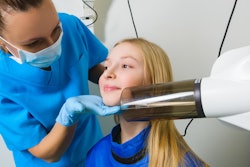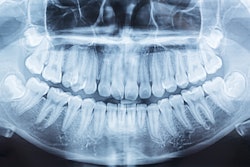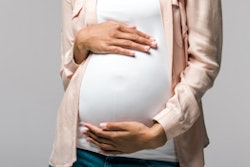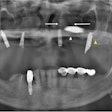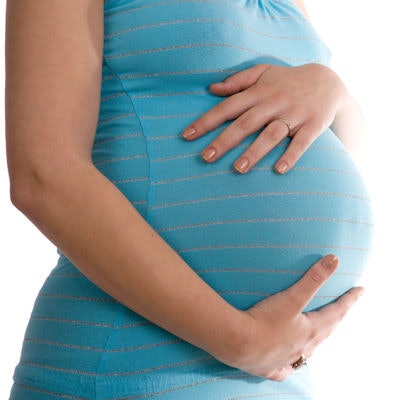
Patients can safely undergo necessary dental x-rays at any stage of pregnancy if proper safety equipment is used appropriately, according to a narrative review published recently in the Journal of the American Dental Association.
The amount of ionizing radiation produced during dental x-ray procedures is so low that it is unlikely to cause an abnormality following fetal exposure. Despite this information, many dentists hesitate to conduct x-rays in pregnant patients, the authors wrote.
"Therefore, exposure to dental ionizing radiation poses a low risk of malformation or spontaneous abortion of the embryo or fetus," wrote the authors, led by Caroline Flagler, a master's student in pharmacology and toxicology at Virginia Commonwealth University in Richmond (JADA, August 16, 2022).
Annually, pregnant people comprise about 4 million of the U.S. population However, less than 50% of those who are pregnant seek oral healthcare due to fear of dental instruments and concerns about safety for their unborn children.
Though evidence has shown that proper oral healthcare is essential for patients and their fetuses, most OB-GYNs never examine patients' mouths or refer them to dentists. Additionally, dentists still make incorrect assumptions concerning the significance of oral healthcare during pregnancy.
As the safety of performing dental x-rays on pregnant patients has been controversial since the 1960s, the authors set out to review the literature to determine the effects that dental ionizing radiation may have on these individuals and their fetuses. The review looked at English language studies from 1957 through 2021, they wrote.
Over 60 years, dosimetry values have shown considerable decreases in ionizing radiation doses and exposures. For example, innovations in digital imaging produced a 60% reduction in exposure by switching from the slowest D-speed to the fastest F-speed film, according to the review.
In 1959, a dose as low as 0.1 one Gy to an embryo or fetus was an indication for therapeutic abortion, while in 2016, it was concluded that the absolute fetal dose from dental ionizing radiation was not significant, because the fetal dose estimate ranged from 0.005 to 2.1 µGys. Since it exhibits deterministic effects, dental ionizing radiation is unlikely to cause in utero birth defects, the authors wrote.
Fear of legal action, disputes regarding responsibility as well as the lack of training, clinical guidelines, and curriculum space offered in dental schools leave some dentists reluctant to obtain x-rays from pregnant patients. To solve this problem, dentists must reach out to a patient's OB-GYN and collaborate on a treatment plan. But ultimately, dentists must take responsibility for a patient's prenatal oral health treatment, which may include dental x-rays if necessary, the authors wrote.
Limitations of the review include that it was based mostly on secondary data. Some primary data sources used phantoms, cadavers, or simulated projections due to the ethical implications of subjecting pregnant individuals to ionizing radiation, they wrote.
"As long as proper precautions were taken and safety standards were observed, dental radiography was, and still is, considered safe for pregnant patients," Flagler and colleagues concluded.




